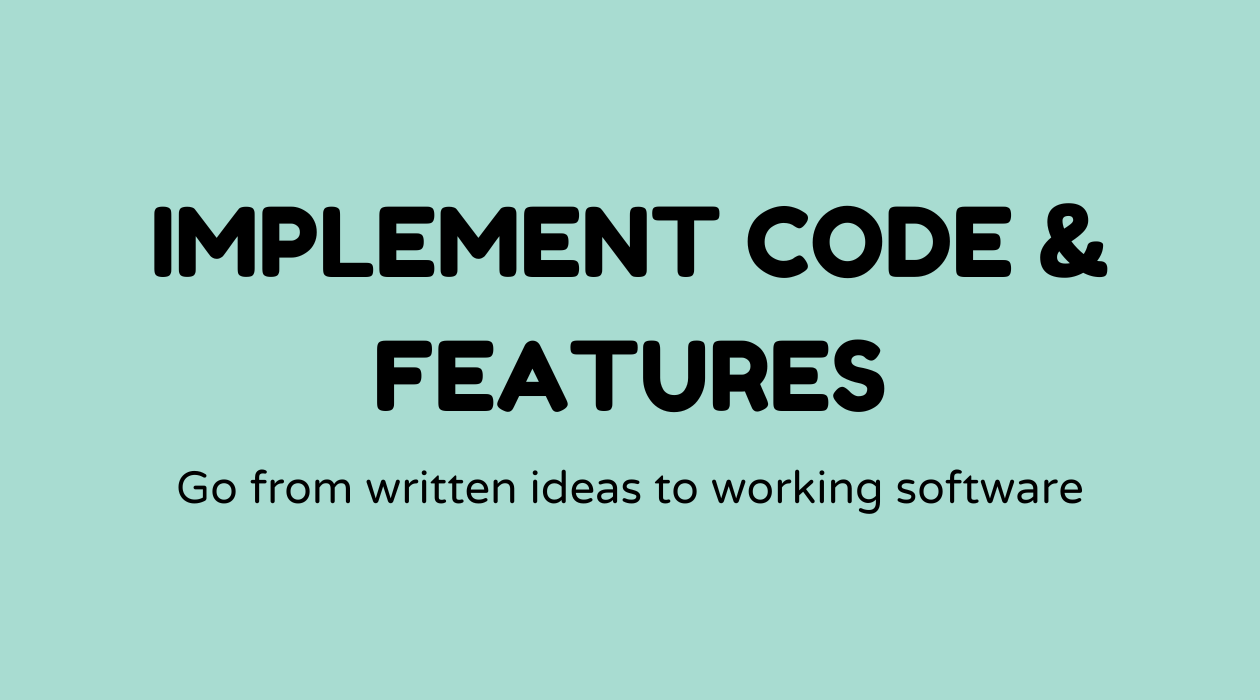Implement code and features

Overview of Code and Feature Implementation:
Code and feature implementation is a vital stage in software development that converts design specifications into working software. During this process, developers generate the actual code that will operate on machines, based on the designs and requirements established in earlier development phases.
In this phase, developers employ various programming languages and tools to create, test, and refine code. The objective is to ensure the software functions as intended while being efficient and easy to maintain. This requires choosing suitable coding patterns and methodologies, along with integrating different system components for smooth operation.
Why Code and Feature Implementation Matters:
Code and feature implementation is the core of product development. Without this key step, the carefully crafted designs and strategies remain theoretical concepts. Ensuring that code and features are properly implemented is essential for multiple reasons. Firstly, it directly influences the product's functionality, determining how well it meets end users' needs. Secondly, well-executed code improves the software's efficiency and scalability, enabling it to accommodate new features or increased workloads without performance decline. Lastly, it is crucial for maintainability, allowing for easy future updates and bug resolutions.
Components of Code and Feature Implementation:
This phase starts with establishing a development environment that fits the project needs. Developers then translate design documents and specifications into code using chosen programming languages. Here’s what it typically entails:
- Writing Code: Developing the actual code for features as specified in the project scope.
- Testing: Performing unit and integration tests to verify code functionality.
- Code Reviews: Collaborating with peers to review code, catching errors and suggesting improvements.
- Debugging: Identifying and addressing bugs to ensure reliable functionality.
- Documentation: Creating clear documentation to accompany the code for future reference.
Steps for Effective Code and Feature Implementation:
A structured approach enhances the effectiveness of code and feature implementation:
-
Grasp the Requirements:
- Break down requirements into smaller, manageable tasks or user stories.
- Define clear and realistic scope boundaries.
-
Choose Appropriate Tools:
- Select programming languages, IDEs, and frameworks best suited for the project.
- Use version control systems like Git for managing code.
-
Develop and Test Code:
- Start by writing basic components and gradually increase complexity.
- Implement thorough testing procedures, both automated and manual.
-
Engage in Code Reviews:
- Regular peer code reviews ensure quality and adherence to standards.
-
Documentation and Iteration:
- Keep documentation current to reflect changes and new features.
- Iterate on the code based on feedback and testing results.
-
Deployment:
- Roll out the code in phases when possible to ensure smooth integration.
Examples of Code and Feature Implementation:
- Facebook React Enhancements: The React team at Facebook consistently implements new features and updates that improve performance and developer workflow.
- Amazon Web Services: AWS regularly introduces new features and enhancements to its services, necessitating efficient code implementation to maintain reliability and scalability.
- Updates in Video Games: Many video games receive updates with new features or patches, demonstrating implementation in response to user feedback and ongoing development.
FAQs
What programming languages work best for feature implementation?
- It varies by project requirements. Common choices include Python, JavaScript, Java, and C++.
How long does the implementation phase usually last?
- Durations can differ based on project scope, complexity, and team size, ranging from weeks to months.
What are feature toggles?
- Feature toggles are techniques that permit the activation or deactivation of features without the need for new code deployment.
How do developers address bugs during implementation?
- Developers engage in debugging sessions, typically using debuggers and logging to identify and resolve issues.
What role do project management tools like JIRA play in this process?
- These tools help track progress, report issues, and manage tasks throughout implementation.
Can non-developers be involved in this phase?
- Primarily developers handle this phase, but contributions from testers, UX designers, and product managers are valuable.



